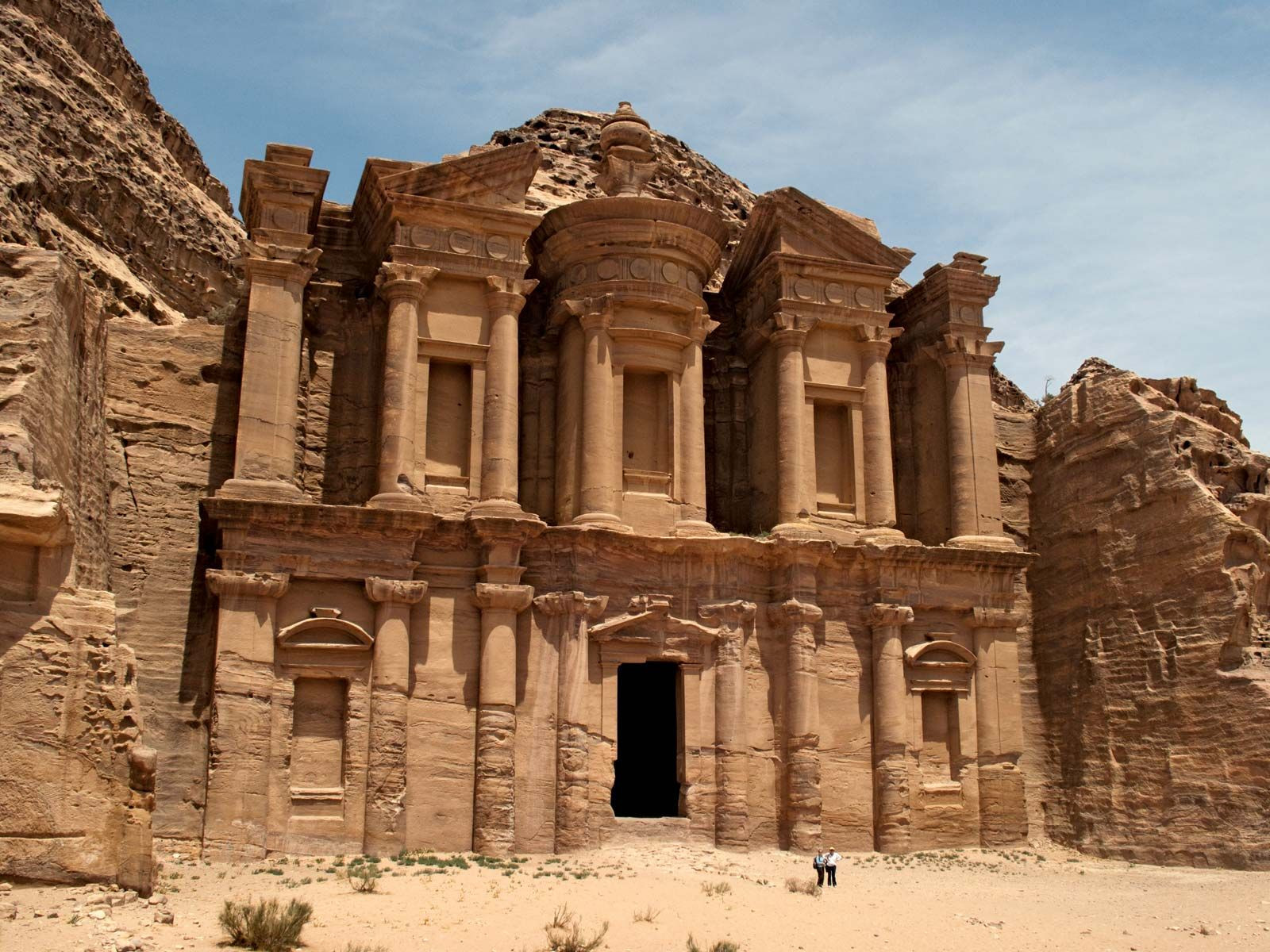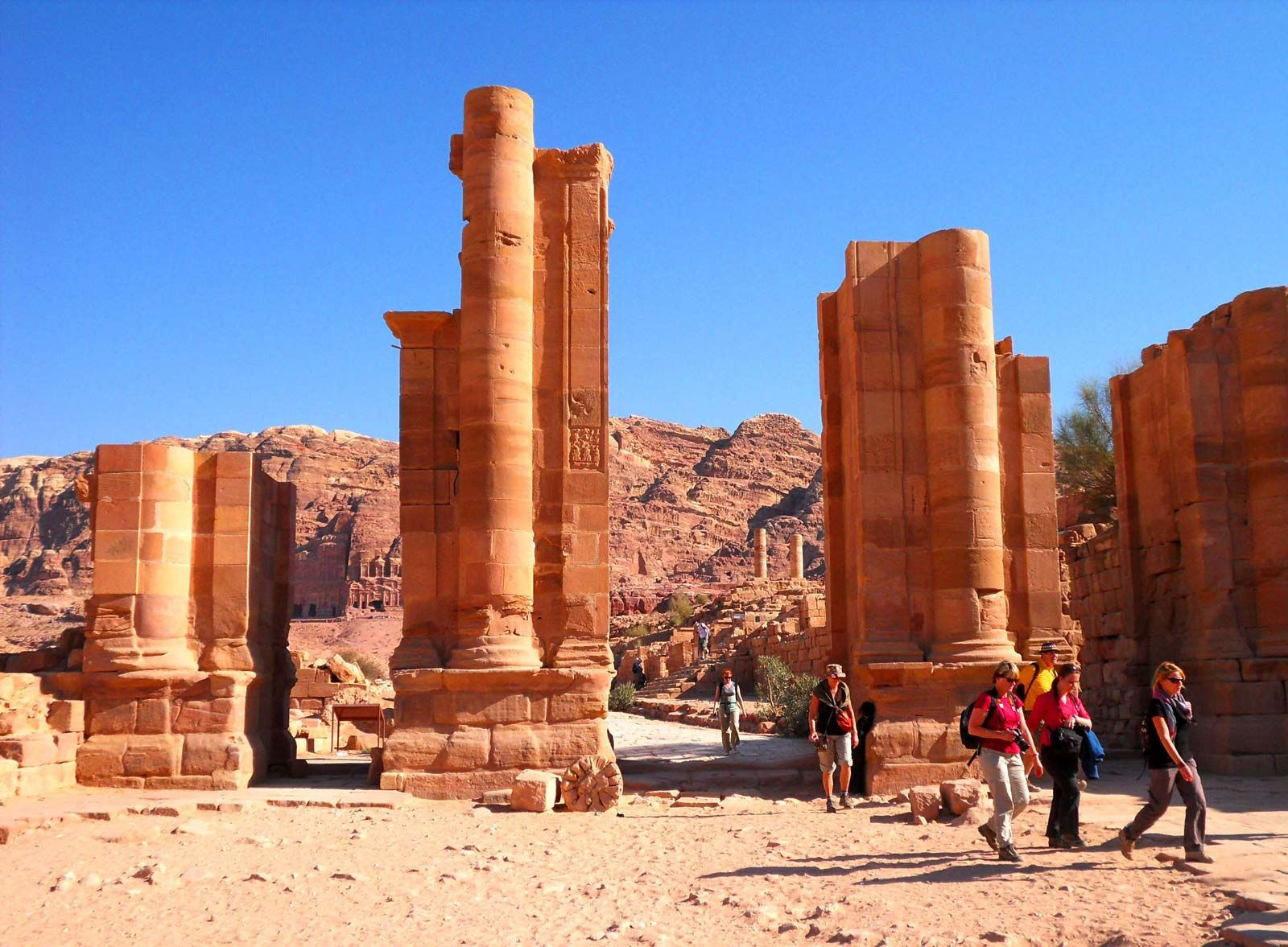Nestled in the heart of the Middle East, Petra stands as a testament to ancient ingenuity and architectural prowess. But before you marvel at its rose-red facades, the fundamental question beckons: Where Is Petra located? This iconic archaeological site is hidden away in the southwestern region of Jordan, a country steeped in history and culture. More precisely, Petra lies in a basin amidst the rugged desert canyons and mountains of what is now known as the Wadi Musa valley. This strategic location, once shrouded from the world, played a crucial role in Petra’s history as a hidden fortress and a thriving trade hub.
 Al-Dayr ("the Monastery") at Petra, Jordan
Al-Dayr ("the Monastery") at Petra, Jordan
Discovering Petra’s Geographical Location and Setting
To pinpoint Petra further, it’s situated approximately 240 kilometers (150 miles) south of Amman, Jordan’s capital city. The ancient city is carved into sandstone cliffs that dramatically shift in color from deep reds and purples to soft yellows, depending on the time of day and the angle of the sun. This breathtaking natural palette earned Petra the poetic nickname “rose-red city,” a phrase coined by the 19th-century clergyman John William Burgon, who described it as “a rose-red city half as old as Time.” The entrance to this hidden city is through the Siq, a narrow gorge that dramatically opens up to reveal the Treasury, Petra’s most iconic structure. The modern town of Wadi Musa serves as the gateway to Petra, accommodating the numerous travelers who come to witness this wonder.
A Journey Through Time: Petra’s Historical Significance
Petra’s history stretches back millennia, with evidence of human presence dating to the Paleolithic and Neolithic periods. Around 1200 BCE, the Edomites inhabited the area, but it was the Nabataeans, an Arab nomadic tribe, who truly shaped Petra into the magnificent city we see today. They established Petra as their capital in the 4th century BCE and skillfully carved elaborate structures into the sandstone cliffs, transforming it into a formidable stronghold and a crucial point along ancient trade routes. Petra flourished as a vital center for the spice trade, connecting distant civilizations from China and India to Egypt, Greece, and Rome.
 Roman gate at Petra, Jordan
Roman gate at Petra, Jordan
In 106 CE, the Roman Empire annexed the Nabataean kingdom, and Petra became part of the Roman province of Arabia. While Petra continued to prosper for a time under Roman rule, shifts in trade routes eventually led to its gradual decline. A devastating earthquake in 551 CE further contributed to its abandonment. After the Islamic conquests of the 7th century and a brief Crusader presence in the 12th century, Petra faded from Western knowledge. It remained largely forgotten by the outside world until its rediscovery in 1812 by Swiss explorer Johann Ludwig Burckhardt, who disguised himself as a pilgrim to gain access to the then-secret location.
Key Attractions and What to See in Petra
Today, Petra is a UNESCO World Heritage site, celebrated for its stunning rock-cut architecture and historical importance. Visitors typically enter through the Siq, an impressive narrow canyon leading to the heart of Petra. The first breathtaking view is of Al-Khazneh, famously known as “The Treasury,” an imposing facade believed to be a royal tomb. Another iconic site is Ad Deir, “The Monastery,” a monumental structure larger than the Treasury, requiring a climb to reach but offering panoramic views. Beyond these famous landmarks, Petra is replete with hundreds of tombs, dwellings, temples, and a sophisticated water management system, showcasing the Nabataean’s advanced engineering skills.
 The Khaznah (“Treasury”) at Petra, Jordan
The Khaznah (“Treasury”) at Petra, Jordan
Conclusion: Petra’s Enduring Allure
So, to definitively answer the question, Petra is majestically situated in southwestern Jordan, in the Wadi Musa valley. Its precise location, hidden within sandstone cliffs and accessed through a narrow gorge, contributed to its mystique and protected its wonders for centuries. More than just a location, Petra is a journey through time, a testament to human civilization, and a breathtaking destination for anyone seeking to explore the wonders of the ancient world. When planning your visit to the Middle East, ensure this lost city is at the top of your list to witness firsthand the magic of Petra in its remarkable Jordanian setting.
